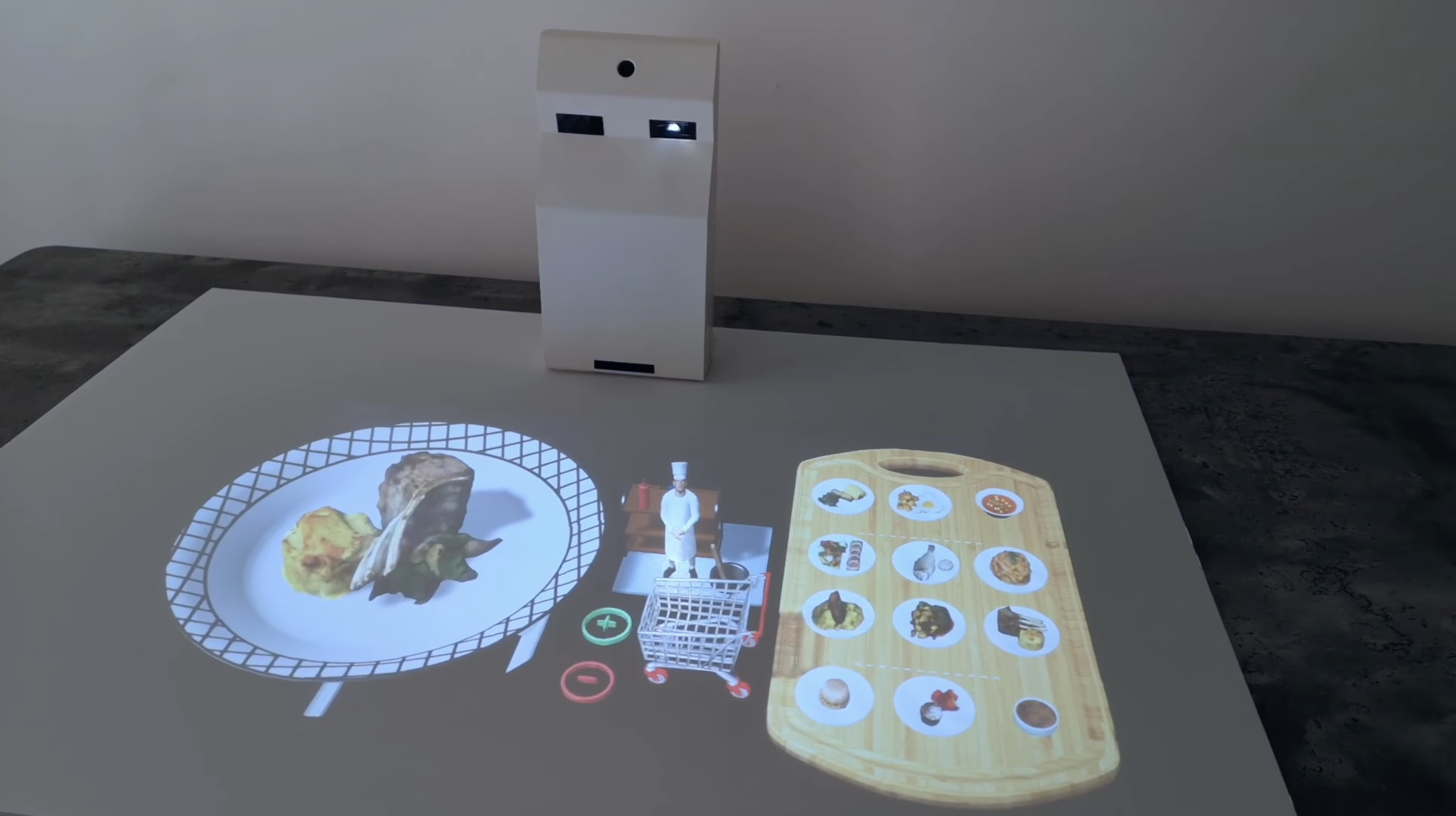Should Restaurants Embrace AR?
We thought QR codes were the wave of the future, but AR goes further.
Do you prefer when a restaurant has images of its dishes on the menu? Some diners might consider it a bit tacky, but others find it helpful in choosing what to order. A recent tweet about the forefront of visual ordering has prompted much discussion about whether3D menu imagery would enhance the dining experience.
Vala Afshar, Chief Digital Evangelist at Salesforce.com, recently retweeted a video first posted by technology entrepreneur Helen Yu in November 2021, along with the caption, "The current use of augmented reality in [dining]." The video shows a server placing a small projector on the table as patrons "scroll" through the three-dimensional options that unfurl on the tablecloth. The captions in the video explain that the tech lets you "preview the dishes from the menu in an entirely new way," meaning that there will be "no surprises when you order."
I'm someone who tends to order with their eyes and not just their stomach, so images often sway my decision. But would a 3D version of a plate of food do much more to draw my attention than a well-lit photo on the menu, or online? See how it works below:
How AR menus work
The company that has inspired this discussion is HoloLamp. Described in a press release as "the first portable, glasses-free augmented reality device that creates optical 3D illusions directly in the user environment," HoloLamp's technology for AR menu navigation was first unveiled in 2018.
In a restaurant setting, the HoloLamp Menu would project a "tangible interface" on the tabletop so you could select and view menu items directly on the table in full-size 3D. You would be able to scroll through the menu as you would an app on your phone; this way, you would see exactly what each dish would look like when it's served to you, including portion size and overall aesthetic.
Don't get too excited, however: The HoloLamp website is no longer functional and almost no updates about the company exist after 2018, strongly suggesting that this menu technology may no longer be in the works. The tech we're seeing in these viral tweets might already have been defunct for years. Still, this kind of functionality has only grown more capable in recent years, so it's worth wondering if this is something we'll see arriving at restaurants in the near future, whether via HoloLamp or another company.
Would AR menus be better than QR codes and/or printed menus?
It seems that the biggest selling point for this technology is the fact that a diner would be able to see the exact portion size they would be served. While that could be helpful for some people, I don't know that it outperforms what a regular old photo on a menu—or a conversation with your server—could convey.
QR codes for menus were met with plenty of opposition initially, and some people might still prefer paper menus to the digital option. But at least QR codes offer an obvious advantage over paper menus: a restaurant saves time and money on all that paper printing, and its menu can be updated more quickly to reflect what's available. Turning a digital menu into an augmented-reality experience, however, doesn't seem to add obvious value. Isn't it more expensive and breakable? Aren't you going to have to take endless hi-res photos of every new menu item using specialized technology that you have to find room for in your restaurant? (See 2:00 in the video above to see how it's done.)
Although it's unlikely HoloLamp will be releasing these AR menu designs anytime soon, the concept of AR menus at all now seems like a more tangible possibility than before. Do we need these interactive menus? I don't think so. Would they be fun to experience and experiment with? Absolutely. Maybe for some restaurants, the novelty factor is exciting enough to give it a try.
